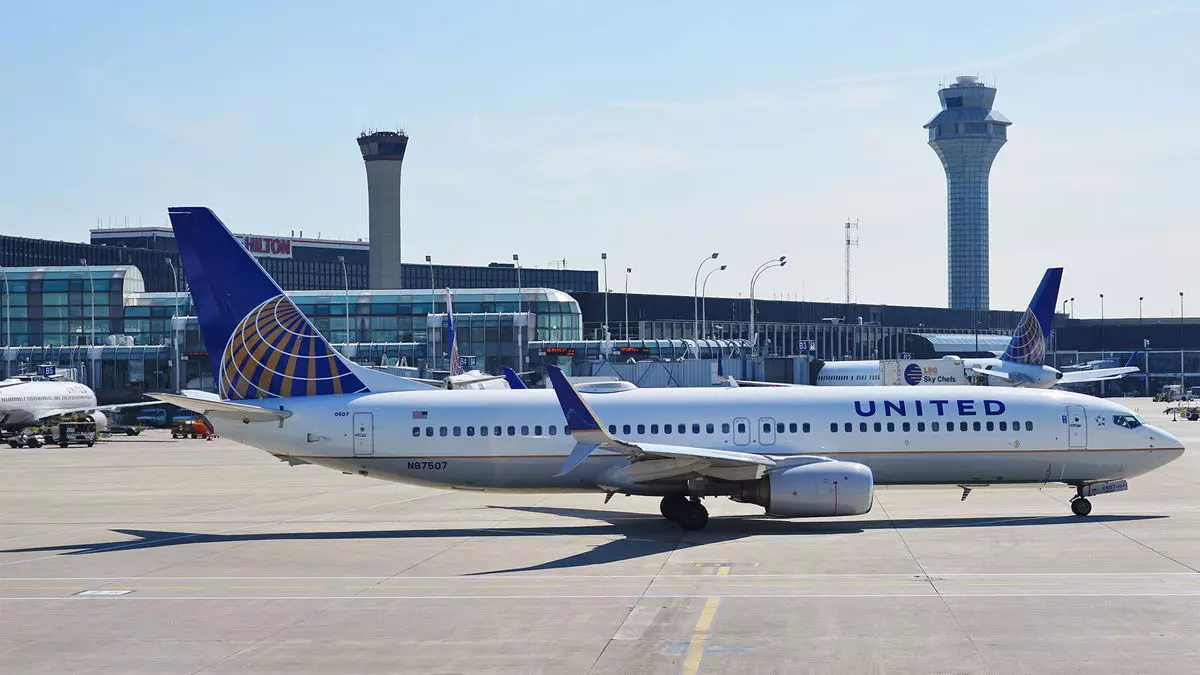The ongoing conflict between American Airlines, the city of Chicago, and United Airlines at O’Hare International Airport is more than just a typical business dispute; it represents a transformative moment in the landscape of U.S. air travel. As the country’s fourth-busiest airport, O’Hare serves as a linchpin for airlines and travelers alike, and the outcomes of this legal tussle may have ramifications extending far beyond Chicago. The gate allocation issue isn’t merely a matter of numbers; it signifies the shifting dynamics of market power, customer loyalty, and future growth prospects for the two major carriers involved.
Shifting Gate Power
Currently, United Airlines commands a larger share of gate space at O’Hare, boasting 90 gates compared to American Airlines’ 71. However, a proposed reallocation plan has the potential to further tilt this balance in favor of United. American’s lawsuit against the city suggests that the gate redistribution process—set to take effect in October—was initiated prematurely. This assertion is pivotal, as it touches upon not just operational logistics but also the contractual obligations that underscore the airport’s expansion strategies.
Under the city’s formula for redistributing gate access, the future allocation would be based on each airline’s previous year’s gate utilization, a system that clearly benefits companies that manage to capture maximum traffic. If United gains an additional five to ten gates while American loses ground, the shift in the competitive ecosystem of O’Hare could solidify United’s already prominent market position.
A Tale of Two Airlines: Growth and Decline
The disparity in recovery following the pandemic has also played a critical role in this unfolding narrative. United Airlines has rebounded with gusto at O’Hare, increasing its annual seat count from 9.3 million in 2019 to an impressive 13 million in 2024. Contrarily, American Airlines has seen a dramatic reduction in operations, offering 24.3% fewer seats than pre-pandemic levels. This stark contrast not only showcases United’s effective recovery strategy but raises questions about American’s ability to compete in a market that demands agility and responsiveness.
American Airlines has not remained stagnant, announcing a 20.9% increase in its summer schedule compared to the previous year, but will this growth be sufficient to reclaim its competitive ground? The answer lies in a multitude of variables, including gate access, passenger loyalty, and operational efficiency.
The Heart of the Legal Battle
At the core of American’s legal argument is the claim that the city mismanaged the gate reallocation process, contrary to earlier agreements made during the 2018 lease negotiations. These negotiations were seen as a necessary backdrop for the O’Hare expansion, which included a commitment for new common-use gates. American contends that it was promised an adequate timeframe to maximize its gate usage before any assessment could be conducted, ensuring a fair evaluation of their potential traffic volume.
The stakes are high, not just for the airlines involved but for the city as well. A successful case could empower American to counter United’s advance assertively, while a ruling favoring the city may entrench United’s dominance, potentially influencing travelers‘ choices for years to come.
Future Implications for the Airline Industry
What we see developing amidst this legal battle is not merely a fight for gate access but a reflection of broader trends affecting the aviation industry. Customer loyalty, particularly in a post-pandemic world, is increasingly becoming a function of operational efficiency and route availability. How each airline capitalizes on its respective advantages—or manages its deficits—will determine their future trajectories.
As this drama unfolds, it is evident that the consequences will not only affect the immediate stakeholders but could also set precedents for airport governance, regulatory measures, and airline competition across the country. Understanding the nuances of this case is crucial for industry analysts and participants, as the landscape of air travel continues to shift in complex and unpredictable ways.
The Road Ahead
With a status hearing scheduled for June 25, the next steps in this unfolding saga will be pivotal. The implications of the legal outcomes could reignite debates on regulatory fairness and competitive practices within the aviation sector. As United Airlines seeks to further entrench its position, American Airlines will need to formulate a robust strategy to reclaim its market foothold, thereby maintaining balanced competition at one of the nation’s most vital air travel hubs. The eyes of the industry will undoubtedly be closely watching to see how this complex interplay of law, regulation, and commerce ultimately unfolds.


Napsat komentář